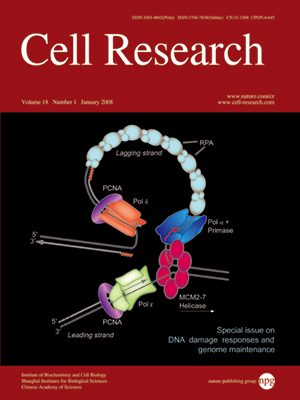
Volume 18, No 1, Jan 2008
ISSN: 1001-0602
EISSN: 1748-7838 2018
impact factor 17.848*
(Clarivate Analytics, 2019)
Volume 18 Issue 1, January 2008: 85-98
REVIEWS
Mechanisms and functions of DNA mismatch repair
Guo-Min Li1
1Graduate Center for Toxicology and Markey Cancer Center, Department of Molecular and Cellular Biochemistry, University of Kentucky College of Medicine, Lexington, KY 40536, USA
Correspondence: Guo-Min Li(gmli@email.uky.edu)
DNA mismatch repair (MMR) is a highly conserved biological pathway that plays a key role in maintaining genomic stability. The specificity of MMR is primarily for base-base mismatches and insertion/deletion mispairs generated during DNA replication and recombination. MMR also suppresses homeologous recombination and was recently shown to play a role in DNA damage signaling in eukaryotic cells. Escherichia coli MutS and MutL and their eukaryotic homologs, MutSα and MutLα, respectively, are key players in MMR-associated genome maintenance. Many other protein components that participate in various DNA metabolic pathways, such as PCNA and RPA, are also essential for MMR. Defects in MMR are associated with genome-wide instability, predisposition to certain types of cancer including hereditary non-polyposis colorectal cancer, resistance to certain chemotherapeutic agents, and abnormalities in meiosis and sterility in mammalian systems.
Cell Research (2008) 18:85-98. doi: 10.1038/cr.2007-115; published online 24 December 2007
FULL TEXT | PDF
Browse 1850


